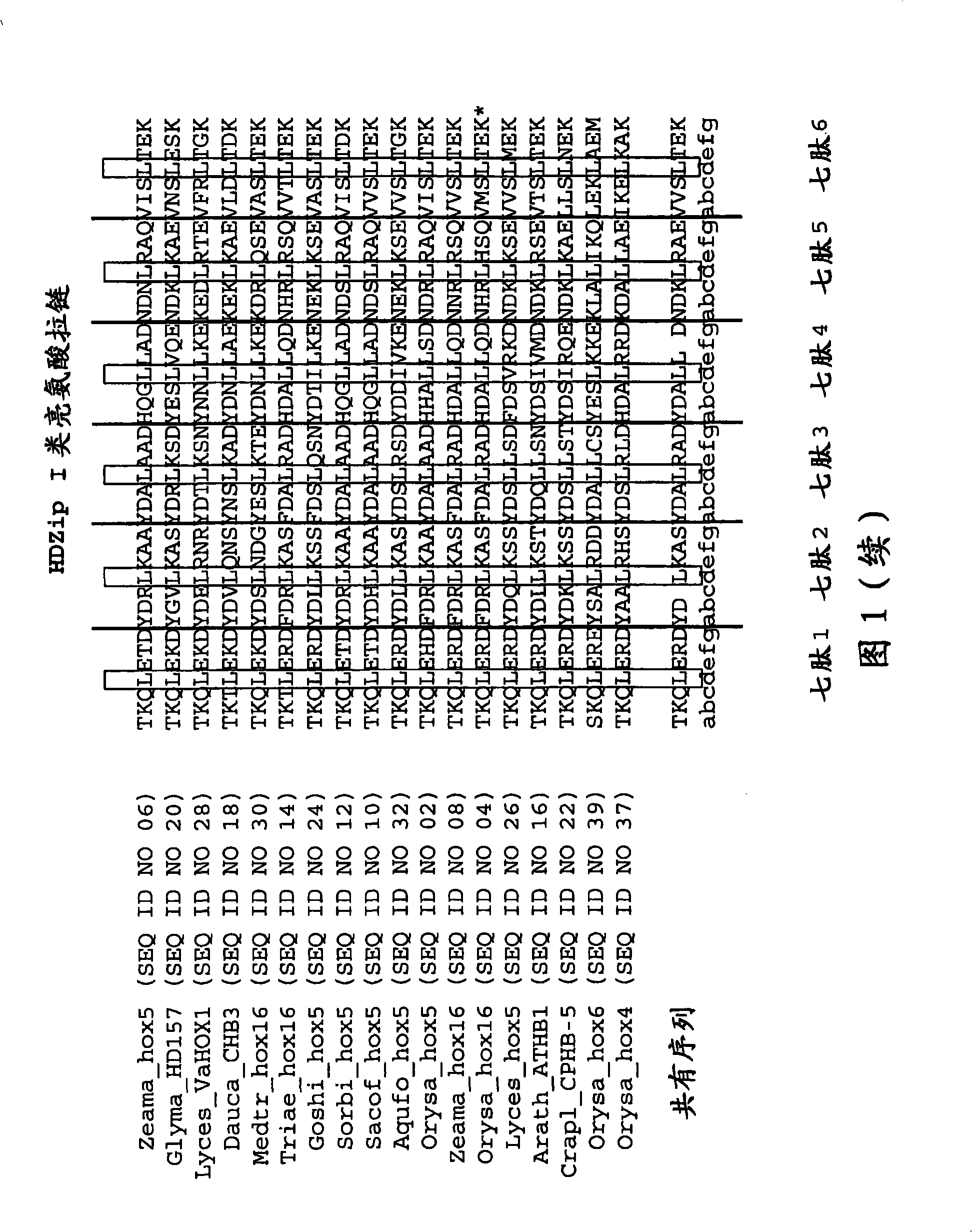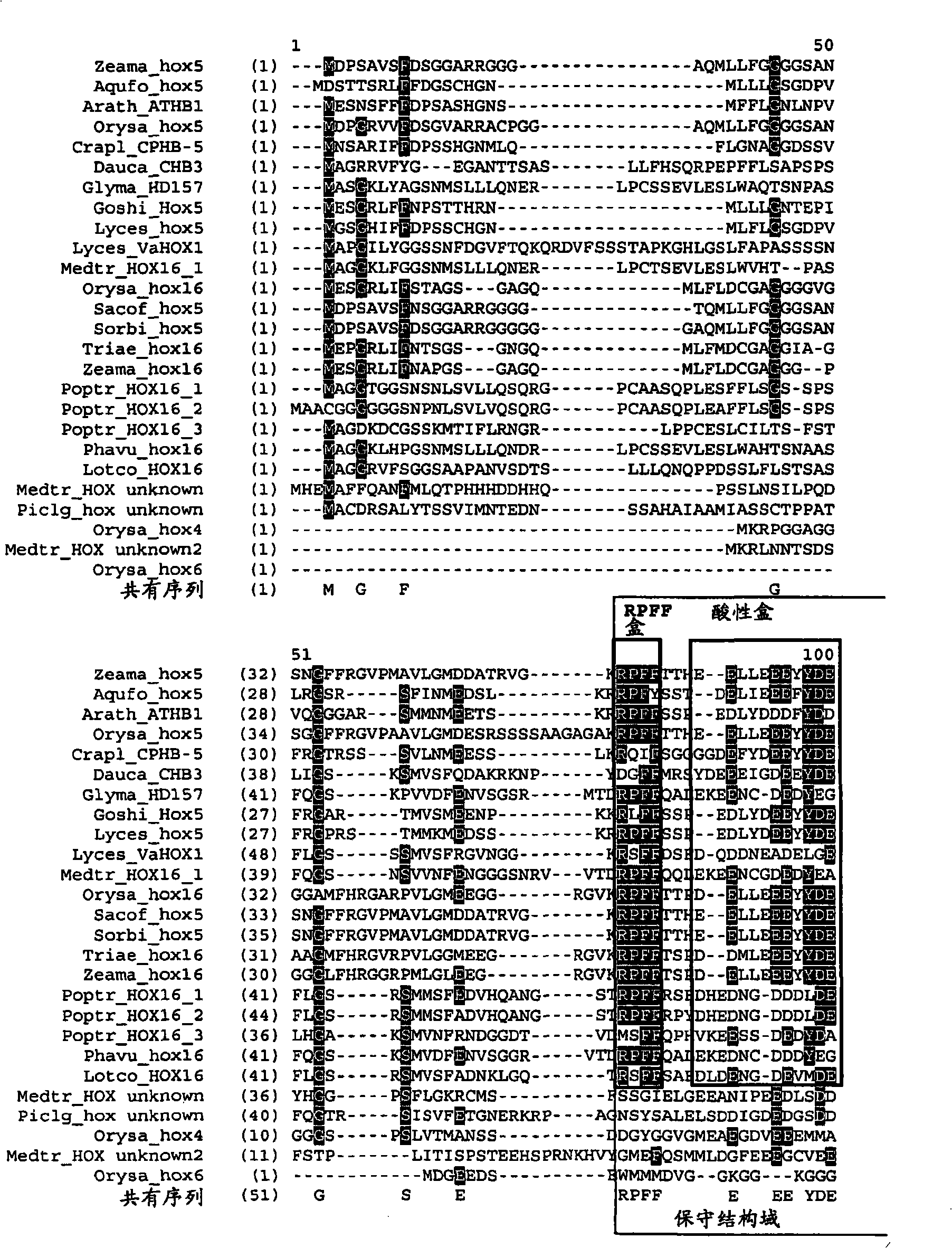Plants having improved growth characteristics and a method for making the same
A plant and plant cell technology, applied in the field of molecular biology, can solve problems such as the researched NRT protein, unreported effects on seed yield, etc., to achieve the effect of improving growth characteristics
- Summary
- Abstract
- Description
- Claims
- Application Information
AI Technical Summary
Problems solved by technology
Method used
Image
Examples
Embodiment I
[0277] Embodiment class I HDZip hox5 polypeptide and coding sequence
Embodiment 1
[0278] Example 1: Identification of SEQ ID NO: 1 and SEQ ID NO: 2 related sequences
[0279] Using database sequence search tools such as the Basic Local Alignment Tool (BLAST) (Altschul et al. (1990) J. Mol. Biol. 215:403-410; and Altschul et al. (1997) Nucleic Acids Res. 25:3389-3402), at Sequences (full-length cDNA, EST or genome) were identified in sequences maintained by the National Center for Biotechnology Information (NCBI) Entrez nucleotide database. Typically, the BLAST program is used to find regions of local similarity between sequences by comparing nucleic acid or polypeptide sequences to sequence databases and by calculating the statistical significance of the matches. For example, the TBLASTN algorithm is applied to the polypeptide encoded by the nucleic acid SEQ ID NO: 1, with default settings and a filter turned on to ignore sequences of low complexity. The output window of the analysis is a pairwise comparison and is ordered according to the probability scor...
Embodiment 2
[0286] Example 2: Alignment of Class I HDZip hox5 polypeptide sequences
[0287] AlignX from Vector NTI (Invitrogen), based on the popular progressive alignment Clustal algorithm (Thompson et al. (1997) Nucleic Acids Res 25: 4876-4882; Chenna et al. (2003) Nucleic Acids Res 31: 3497- 3500). The phylogenetic tree can be constructed using the proximity join clustering algorithm. The default values are gap opening penalty 10, gap extension penalty 0, 1, and the weight matrix chosen is Blosum 62 (if peptides are aligned).
[0288] The results of the multiple sequence alignment are shown in figure 2 . The 3 main domains characterized from the N-terminal to the C-terminal orientation are heavily boxed and identified as the acidic box, class I homology domain, and six heptad-leucine zippers. The "conserved domain" encompasses these 3 domains. Additionally, the Trp tail and RPFF amino acid motifs are lightly boxed.
PUM
 Login to View More
Login to View More Abstract
Description
Claims
Application Information
 Login to View More
Login to View More - R&D
- Intellectual Property
- Life Sciences
- Materials
- Tech Scout
- Unparalleled Data Quality
- Higher Quality Content
- 60% Fewer Hallucinations
Browse by: Latest US Patents, China's latest patents, Technical Efficacy Thesaurus, Application Domain, Technology Topic, Popular Technical Reports.
© 2025 PatSnap. All rights reserved.Legal|Privacy policy|Modern Slavery Act Transparency Statement|Sitemap|About US| Contact US: help@patsnap.com



